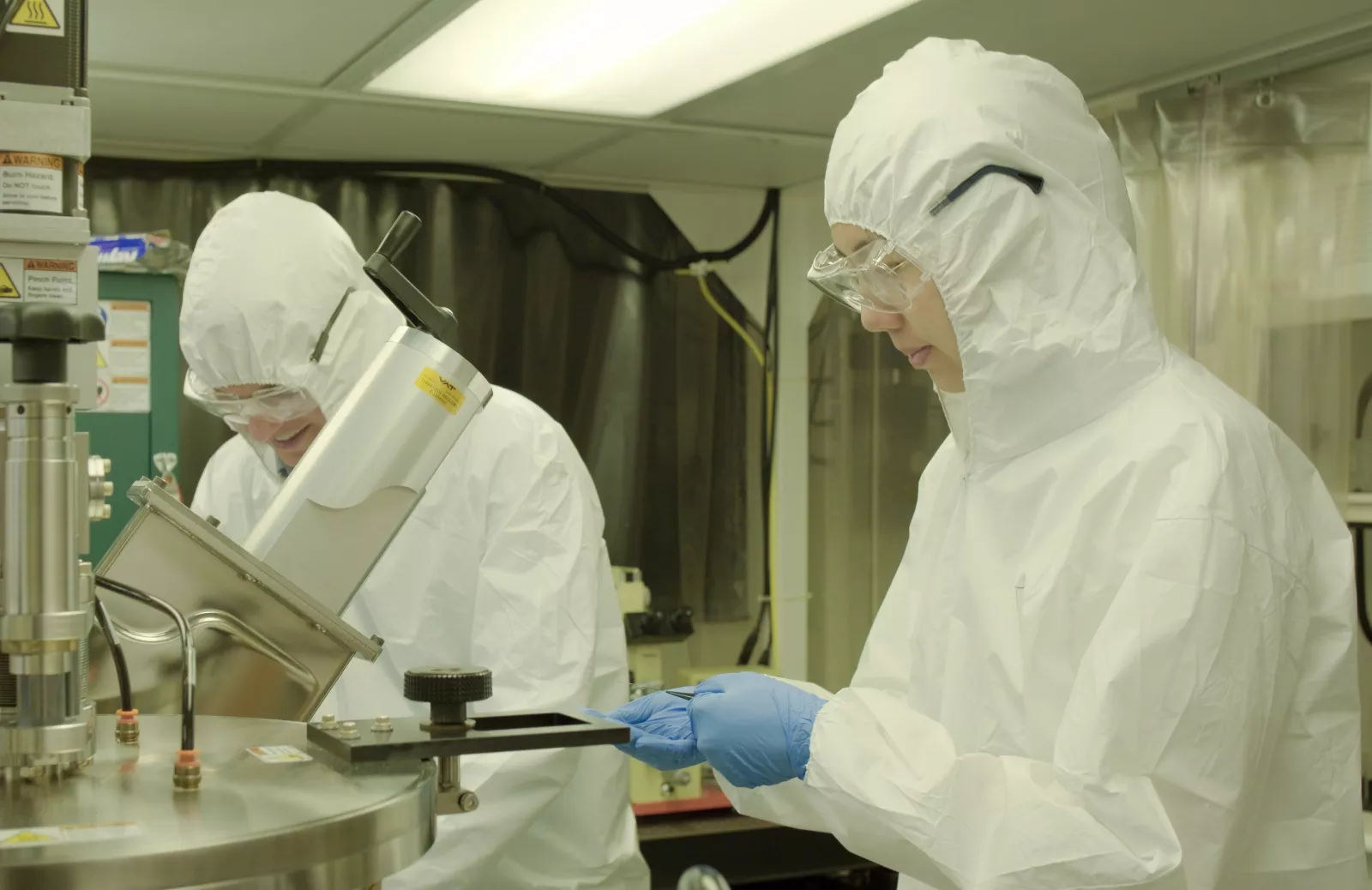
Every summer, the Park Science building is transformed into a sort of secret playground for Bryn Mawr students and faculty. The classrooms are mostly empty and the common areas don’t bustle with school-year activity.
But as you make your way around the labyrinth-like hallways and into individual labs, you’re sure to encounter small groups of students excitedly working side-by-side with faculty and graduate students in labs researching everything from the use of gold nano-disks to fight cancer to understanding soft coral’s resistance to climate change.
On a recent visit to Professor of Physics May Cheng’s lab, we ran into Andy Clark, who earned his Ph.D. at Bryn Mawr in 2022, and physics major Thea Liao ’25, who is working in the lab through the Summer Science Research program.
Clark is now a medical physics resident at Fox Chase Cancer Center and he’s continuing research he started at Bryn Mawr on the use of gold nano-disks in cancer treatment. Equipment in Cheng’s lab can make the disks with a diameter smaller than red blood cells and thickness measured in atomic layers.
Nanomaterials are promising tools for enhancing the therapeutic effect of radiotherapy. Scientists have tried to apply spherical nanoparticles in cancer treatment over the years, however they face critical challenges inhibiting their clinical implementation. Nano-disks have great potential to overcome these challenges, but only a few studies exist in the literature due to the cross-disciplinary nature of the work.
“The fabrication of the disks is used primarily for computer chips and not something you’d see in any biology lab,” says Clark, who will continue to create the disks at Bryn Mawr.
Clark got his undergraduate degree in physics and was interested in thin films, which drew him to Cheng and Bryn Mawr.
“I had already grown thin films, thin layers of materials with the length and width much larger than the thickness. Thin film deposition was her main focus and research so that’s what connected us initially. We then had an opportunity to join this NSF Center for Mechanobiology and that was the perfect chance to take physics and apply it to biology, which was always of interest to me.”
Liao has been assisting Clark over the summer in collaboration with the Williamson Lab and will continue to work in Cheng’s lab when the academic year begins. Liao uses x-ray diffraction to confirm both the elemental quality of the disks and the thickness. She then uses atomic force microscopy to further confirm the disks’ diameter and thickness.
“Learning nanofabrication is great for our students because so many industries need people who know how to do it. I got a call from Apple last Christmas asking for students who had this training,” says Cheng.
"I think the best part of doing research at Bryn Mawr is all the professors and mentors are very accessible and they are patient to teach you all the things they know,” says Liao. “The second part I think is the community, the close community in Bryn Mawr can really provide me with more communication with other students. For the physics department, we have a department lunch every Thursday in the summer and we can talk about what we do each week during that time."